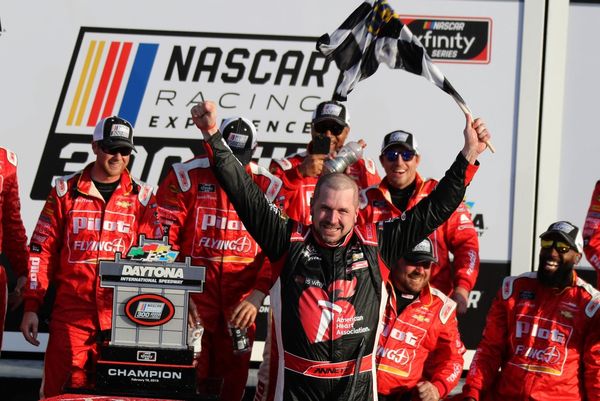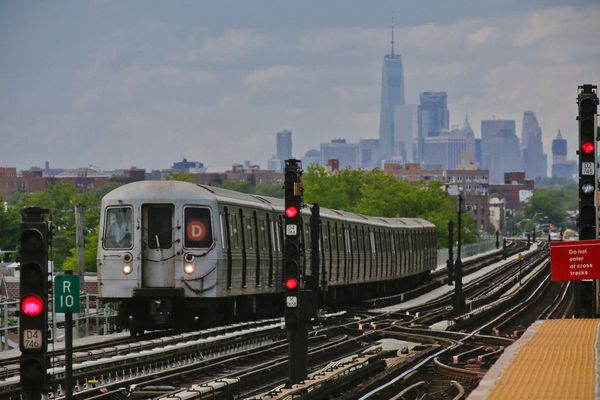
Good morning, InsideEVs reader. As I write this, much of the United States is awash in a record-breaking heat wave that's very likely driven by human-made greenhouse gas emissions. Here in Detroit, where I'm on location for some work-related goings-on, it feels more like my native Texas with temperatures rising to the mid-90s.
But for some automakers, it's as fine a time as any to advocate for an end to the fuel economy rules that have led to cleaner and more fuel-efficient vehicles over the past 50 years.
That kicks off today's edition of Critical Materials, our morning roundup of industry and technology news. Also on deck today: Western automakers will probably never regain ground in China, and Tesla's Robotaxis are rolling out. Let's dig in.
30%: Who Benefits Most If Fuel Economy Penalties Get Axed?

As InsideEVs reported earlier this month, a provision in the U.S. Senate's version of President Donald Trump's budget bill would make penalties for violating the Corporate Average Fuel Economy (CAFE) standards a mere $0. That would effectively de-fang the entire program and remove any incentives automakers have to make more fuel-efficient (and thus, less polluting) cars, save for the vague notion of keeping up with competitors via vague "market" forces.
The Wall Street Journal reports that two companies in particular that live and die by big truck sales are thrilled about the potential move:
Automakers including General Motors and Jeep-parent Stellantis support the measure, while some of their rivals don’t. Consumer advocacy groups warn that the move could result in dated technology remaining on the road and further dependence on foreign oil sources.
“The combination of high penalties with the nearly impossible CAFE standards finalized during the previous administration is a major problem,” said John Bozzella, president and CEO of the Alliance for Automotive Innovation, which represents most major carmakers.
GM and Stellantis say they are continuing to develop fuel-efficient technology, including on their new V-8s, but that current CAFE rules are unrealistic.
The proposed changes are splitting the auto industry. GM and Stellantis said they support eliminating the fines altogether. Several major automakers, including Toyota and Hyundai, support revisiting the standards but are opposed to wholesale elimination of CAFE penalties, people familiar with the matter say. Ford declined to disclose its position.
In recent years, GM and Stellantis have faced the heftiest fines. Since 2022, GM has paid $128 million for CAFE violations, while Stellantis has paid more than $425 million. Ford has never been fined, according to federal data. Automakers can buy regulatory credits from competitors to offset fines.
The latter is not surprising about Stellantis, which in America relies heavily on its Ram trucks and Dodge vehicles for profits; the odd plug-in hybrid or Fiat 500 sold here and there clearly aren't helping it to keep up with regulations. Meanwhile, Ford has long been a significant player in the hybrid market and today makes several popular electric vehicles.
As that story notes, CAFE rules have transformed the American car landscape since they were signed into law by Republican President Gerald Ford in 1975. They have led to smaller and more efficient engines and, combined with California's strict emissions rules (also in the crosshairs of the Trump administration) were driving a much more all-electric future under President Joe Biden's policies.
But if you're the sort of automaker that isn't very good at making those kinds of cars, or has never had much interest in doing so, these rules have always been untenable and potentially even expensive.
GM, at least, says it's committed to an all-electric future and not only has an expansive EV lineup but is now the largest automaker producer of battery cells in North America. Stellantis... well, it's bringing back the Hemi, folks. Neither has any immediate desire to give up the large-engined, gas-powered vehicles they know how to make and can make very profitably. Longtime American automotive executive Bob Lutz is given space to grouse about CAFE rules at the end of that story:
Bob Lutz, who had senior roles at GM, Ford and Chrysler over a nearly 50-year career, said the inception of fuel-economy rules placed U.S. automakers at a disadvantage to Asian-based rivals that, at the time, were already making smaller cars. It took the domestic industry decades to recover, he said.
“We might have gone off the big V-8 beasts ourselves,” he said. “Market forces could have taken us in the same direction but with less turmoil.”
Which leads nicely to my next point.
60%: Western Automakers Keep Losing In China, As Chinese Brands Expand Abroad

The auto industry has always chased two things: performance and efficiency. Sometimes it has to be dragged kicking and screaming to do the latter, but that's the march of powertrain technology, like it or not.
And it's where China's automakers now have a commanding lead, both in their home country as local buyers opt for native brands, and increasingly abroad. Expect that trend to continue unabated, Bloomberg reports:
The picture for foreign automakers in China doesn’t get any rosier with new research from consultant AlixPartners showing local brands’ dominance will climb to as high as 76% by 2030 as the market share of Japanese, European and U.S. companies dwindles.
China’s automotive industry, once reliant on foreign joint ventures, has undergone a rapid transformation driven in part by significant government support and investment in new energy vehicles. As local brands have grown, foreign automakers have been pushed sideways.
In recent years, confronted with slowing domestic growth and persistent overcapacity issues, China’s carmakers have prioritized global expansion. In Europe, Chinese automotive brands are now on track to capture a 10% share of the market by 2030, adding an estimated 800,000 in unit sales that could fundamentally reshape the continent’s car industry, AlixPartners said.
I suppose the American automakers cheering the end of CAFE rules are banking on the idea that China's brands can be somehow kept out of this country forever, fencing them off from having to compete with a raft of more efficient competitors that could make Toyota look like Mitsubishi. But I find that difficult to believe.
90%: Tesla's Robotaxi Era Has Arrived, Albeit Tepidly

The Tesla Robotaxis are here. If by "here," you mean "a small, geofenced area of Austin," anyway. But every driverless taxi operation starts small in some way, even the ones like Tesla that are now up against what Waymo has been doing for years.
But as Reuters reports, it's seen by investors and AV-watchers alike as the start of something much bigger:
The event marked the first time Tesla cars without human drivers have carried paying riders, a business that Musk sees as crucial to the electric car maker's financial future.
He called the moment the "culmination of a decade of hard work" in a post on his social-media platform X and noted that "the AI chip and software teams were built from scratch within Tesla." In recent days, the automaker sent invites to a select group of influencers for a carefully monitored robotaxi trial in a limited zone. The rides are being offered for a flat fee of $4.20, Musk said on X.
It could take years or decades for Tesla and self-driving rivals, such as Alphabet's Waymo, to fully develop a robotaxi industry, said Philip Koopman, a Carnegie Mellon University computer-engineering professor with expertise in autonomous-vehicle technology.
A successful Austin trial for Tesla, he said, would be "the end of the beginning - not the beginning of the end."
We'll have more on this today. If you've had any experiences with the Robotaxi service in Austin thus far, get in touch.
100%: What Happens If Fuel Economy Penalties Get Axed Entirely?

Prediction time. Let's say the U.S. government does, in fact, get rid of penalties for violating CAFE standards. What do you see happening to the climate, the market as a whole and the EV race? It's bad news for Tesla and Rivian, for one, as they get a sizable amount of revenue from selling carbon offset credits.
But what happens to the other car companies? Do they double-down on V8 engines and big trucks, only to be left with few defenses if BYD and the like ever break into the U.S.? Or does the "market" evolve naturally on its own? Drop your theories in the comments.
Contact the author: patrick.george@insideevs.com







